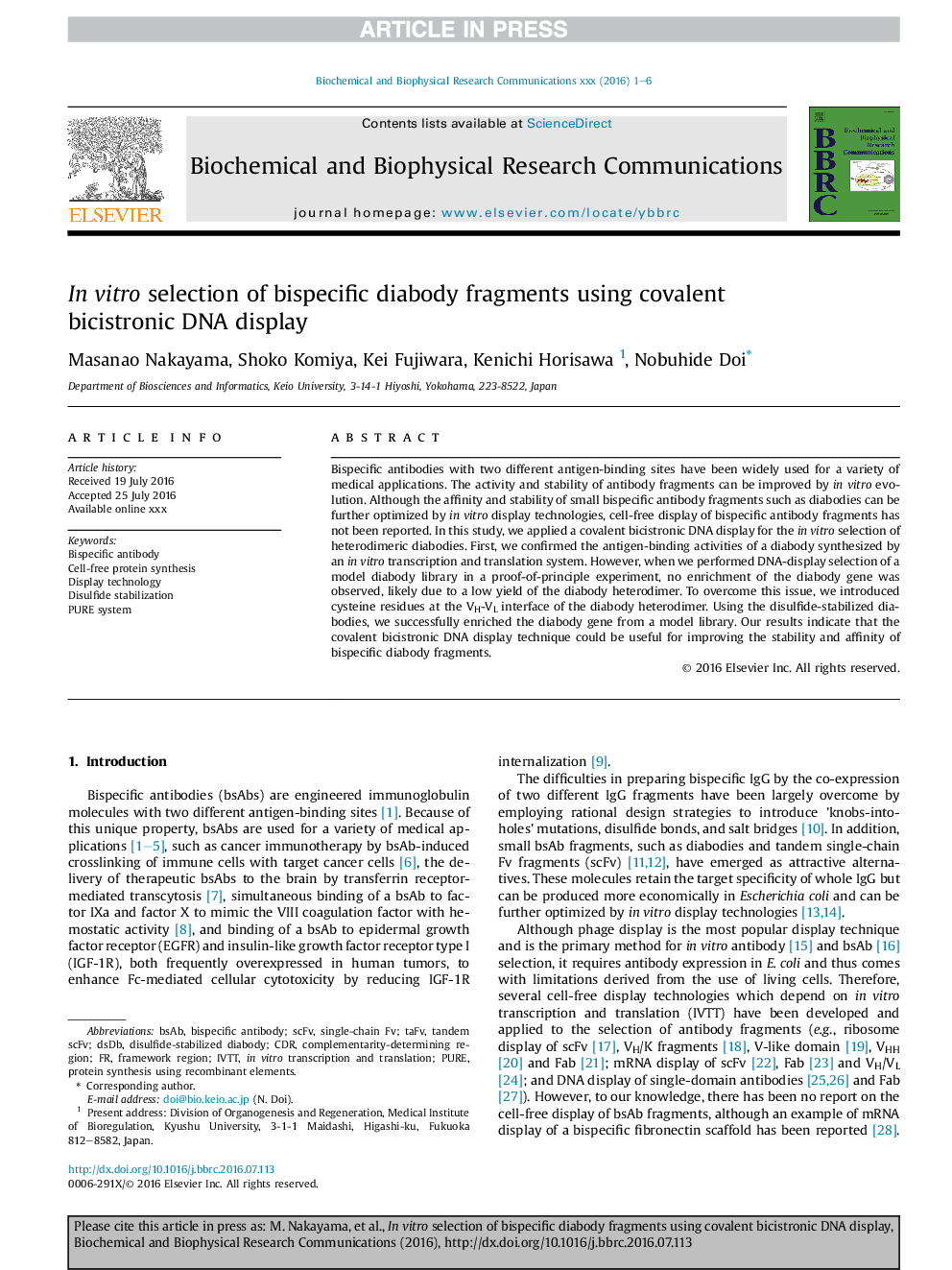| Article ID | Journal | Published Year | Pages | File Type |
|---|---|---|---|---|
| 5506784 | Biochemical and Biophysical Research Communications | 2016 | 6 Pages |
Abstract
Bispecific antibodies with two different antigen-binding sites have been widely used for a variety of medical applications. The activity and stability of antibody fragments can be improved by in vitro evolution. Although the affinity and stability of small bispecific antibody fragments such as diabodies can be further optimized by in vitro display technologies, cell-free display of bispecific antibody fragments has not been reported. In this study, we applied a covalent bicistronic DNA display for the in vitro selection of heterodimeric diabodies. First, we confirmed the antigen-binding activities of a diabody synthesized by an in vitro transcription and translation system. However, when we performed DNA-display selection of a model diabody library in a proof-of-principle experiment, no enrichment of the diabody gene was observed, likely due to a low yield of the diabody heterodimer. To overcome this issue, we introduced cysteine residues at the VH-VL interface of the diabody heterodimer. Using the disulfide-stabilized diabodies, we successfully enriched the diabody gene from a model library. Our results indicate that the covalent bicistronic DNA display technique could be useful for improving the stability and affinity of bispecific diabody fragments.
Keywords
Related Topics
Life Sciences
Biochemistry, Genetics and Molecular Biology
Biochemistry
Authors
Masanao Nakayama, Shoko Komiya, Kei Fujiwara, Kenichi Horisawa, Nobuhide Doi,
